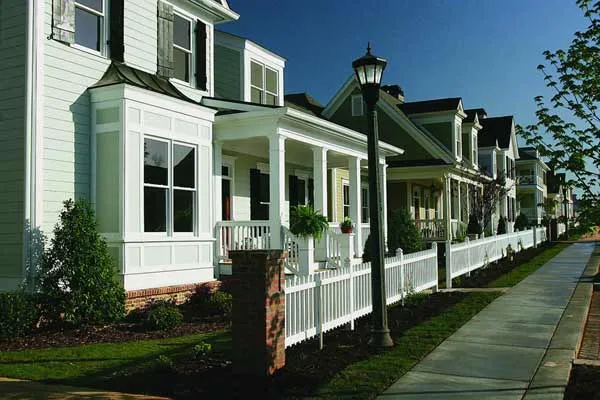
We may be compensated if you purchase through links on our website. Our team is committed to delivering honest, objective, and independent reviews on home products and services.
Fiber-cement siding is made from a mix of wood pulp fibers and Portland cement, offering natural beauty in a product that’s stronger and more resilient than traditional materials. Unlike traditional siding materials, it doesn’t rot, warp, or become susceptible to insect damage. It can be a game-changer if you want to upgrade your exterior and boost your property values. And with today’s myriad of style, texture, and color options, you can get an authentic, high-performance, and period-perfect look. Learn more about how it works in this guide.
Considering Climate When Updating Your Siding

Climate is one of the biggest things you’ll have to think about when you upgrade your siding.
If you live somewhere prone to harsh weather or in extended direct sunlight, natural wood and painted exteriors can deteriorate quickly. Many fiber-cement models have baked-on color finishes specially engineered to withstand damaging UV rays and extreme conditions. They also withstand peeling, cracking, and chipping.
Similarly, if you live in a wet area with heavily fluctuating temperatures, fiber cement may be a good siding option for you. It’s less susceptible to swelling and contracting, which can often plague other materials when the seasons change.
Fiber-Cement Siding Can Emulate an Authentic Style
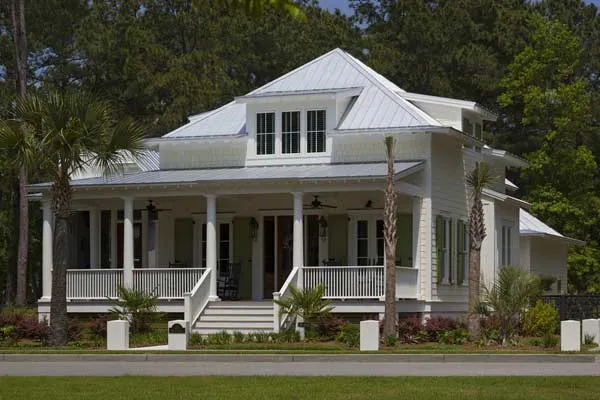
Fiber-cement siding can emulate the look of traditional wood to complement your home’s design without the drawbacks of a fragile material. Whether you’re seeking to restore the look of a grand Cape Cod or adding distinction to a handsome bungalow, you can get the warm, enchanting look you want without the constant upkeep.
Fiber-Cement Siding Can Create Character

Using different siding orientations can add more texture and character to your design. For example, you can combine vertical fiber-cement siding with trim boards to get a rustic board-and-batten look that exudes cottage charm. You can also use multiple siding designs, one for your home’s base and another as an accent around windows and doorways.
How to Choose the Color for Your Siding
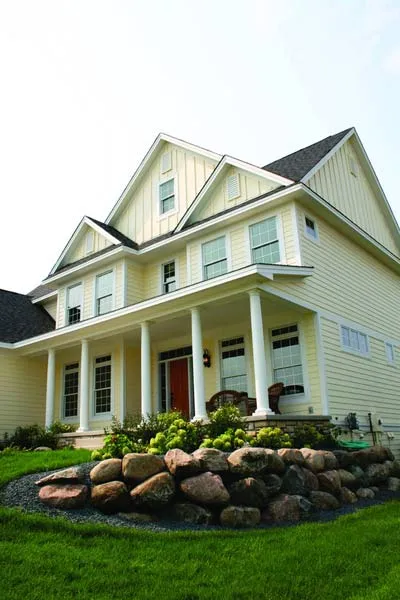
Deeper body hues create a warm, welcoming feeling, while soft contrasts between siding and trim can make your home appear larger. If you’re afraid of choosing the wrong color, use a variation of your home’s original shade or explore pre-curated color palettes online. Some siding manufacturers may also offer tools to help you visualize how color combinations look on your home.
Think about the ambient light at various times of day when you choose a color scheme. Your siding can look different at high noon compared to shady and evening settings.
Mix and Match Siding Colors and Styles
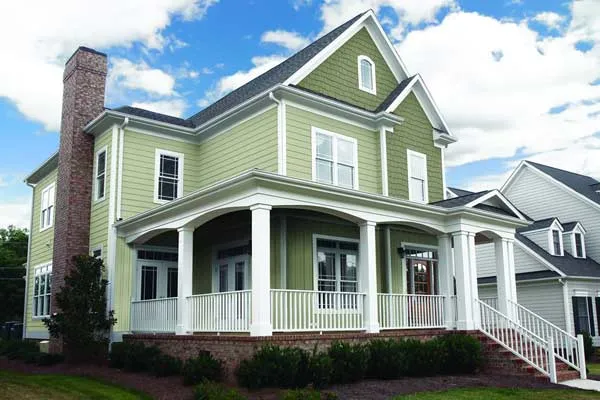
Creating a distinctive exterior often involves combining different siding styles and colors. Try using a mix of tones in the same color family or including a mix of vertical, lap, and shingle-style siding. Playing around with different textures like stone veneer, brick accents, and metal highlights can add depth and visual interest to your home’s facade. You can also highlight specific areas of your home, like gables or entryways, creating a custom look that makes your eyes pop.
Fiber-Cement Siding Adds a Finishing Touch to Your Home
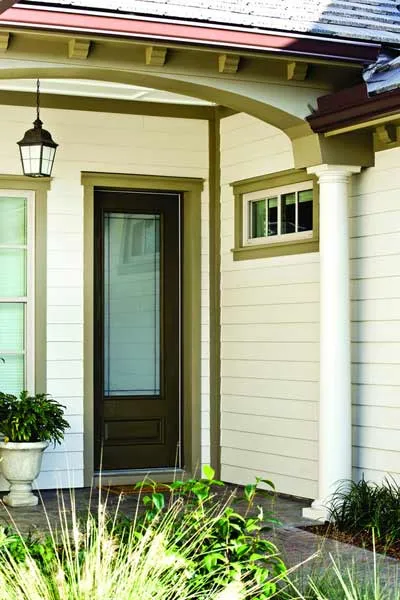
Fiber-cement trim boards offer the perfect finishing touch for your home’s exterior. These versatile products let you create non-structural architectural elements like column wraps, friezes, fascia, gables, and other accent areas. You can also tailor them to outfit architectural features like porch posts, window casings, and elegant eaves. We recommend using a contrasting color to make your trim stand out.
Trim may be the most delicate part of your home’s exterior, but with fiber-cement’s added durability, it’ll stay beautiful and last for years against weathering.
Coordinate Your Roof and Siding
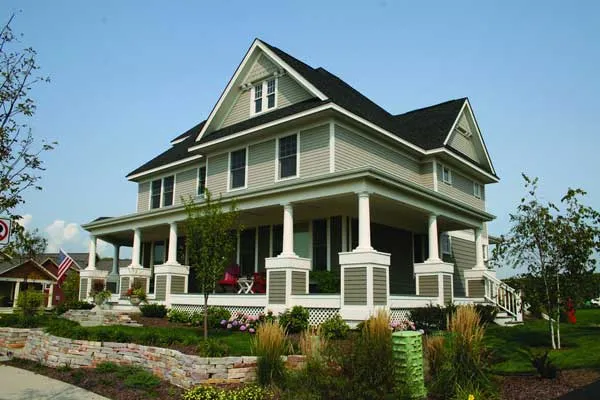
Look into how your siding will complement your roof. If your heart is set on a particular roof shade, tie everything to that color and work backwards. The same applies the other way around—if you have a particular color of siding you want to use, tie everything else to that color.
Your roof’s material and texture are also worth thinking about. Shingles, tiles, and metal roofs each bring distinct characteristics that need to sync with your siding.
If possible, get samples of your chosen colors and roofing options to compare against your home. You can also use online tools to see how different roof and siding color combinations would look on an actual home.
Complimenting Your Fiber-Cement Siding
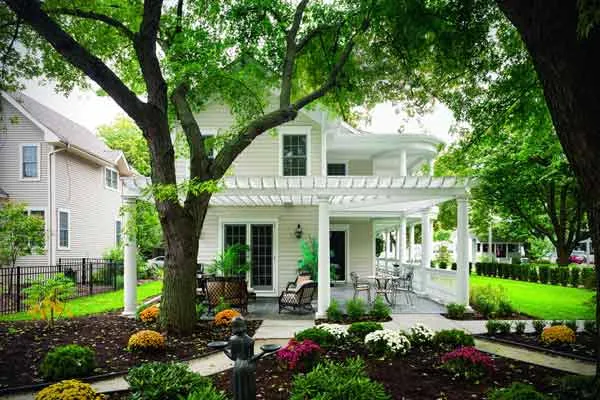
By extending fiber-cement beyond just your siding, you can turn a boring backyard into a peaceful oasis without the added maintenance. A fresh, white pergola can complement your siding’s color and texture and give you more shade. You can also add fiber-cement planters, benches, and garden borders to keep the continuity going.
Durability and Longevity of Fiber-Cement Siding
Fiber-cement siding’s lifespan depends on the specific product you choose and the climate where you live. However, as a general rule of thumb, it can last up to 50 years or more with proper maintenance. The added fire, fading, rot, insect, and weather resistance also lower routine maintenance costs and hassle over the long term.
Environmental Considerations for Fiber-Cement Siding
Using fiber-cement siding may also be a good option for environmentally conscious homeowners. Compared to other materials, both the materials and the manufacturing process used to build it are sustainable. Many manufacturers also use recycled content in their products.
Fiber cement is a better insulator than wood and vinyl, so it can improve your home’s energy efficiency and lower heating and cooling costs. Finally, since you won’t need to replace your siding as frequently, you’ll contribute less waste to landfills over time.
